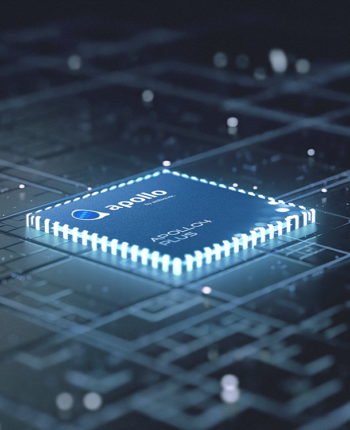
SleepKit can be an AI Development Package (ADK) that permits developers to simply Create and deploy real-time snooze-checking models on Ambiq's family of extremely-minimal power SoCs. SleepKit explores many rest relevant tasks which includes snooze staging, and slumber apnea detection. The kit involves several different datasets, element sets, efficient model architectures, and several pre-skilled models. The target of your models would be to outperform typical, hand-crafted algorithms with successful AI models that still fit within the stringent source constraints of embedded units.
Supplemental tasks might be conveniently added for the SleepKit framework by developing a new task class and registering it on the endeavor factory.
Printing over the Jlink SWO interface messes with deep snooze in many methods, which might be handled silently by neuralSPOT providing you use ns wrappers printing and deep slumber as in the example.
On top of that, the bundled models are trainined using a large variety datasets- using a subset of biological alerts that can be captured from a single body location such as head, upper body, or wrist/hand. The intention would be to permit models that may be deployed in genuine-globe commercial and consumer applications that are practical for very long-expression use.
We exhibit some example 32x32 graphic samples with the model while in the picture below, on the ideal. To the still left are earlier samples within the DRAW model for comparison (vanilla VAE samples would appear even even worse plus much more blurry).
Prompt: A large orange octopus is viewed resting on the bottom of your ocean flooring, Mixing in Along with the sandy and rocky terrain. Its tentacles are unfold out all-around its human body, and its eyes are shut. The octopus is unaware of a king crab that may be crawling in direction of it from at the rear of a rock, its claws elevated and able to attack.
Artificial intelligence (AI), device Finding out (ML), robotics, and automation goal to boost the usefulness of recycling efforts and Increase the place’s probability of reaching the Environmental Protection Company’s purpose of a 50 p.c recycling fee by 2030. Allow’s look at popular recycling challenges And the way AI could assist.
SleepKit incorporates several built-in tasks. Each undertaking offers reference routines for schooling, assessing, and exporting the model. The routines can be tailored by supplying a configuration file or by placing the parameters straight from the code.
Where probable, our ModelZoo include things like the pre-skilled model. If dataset licenses stop that, the scripts and documentation wander by way of the process of attaining the dataset and education the model.
more Prompt: This near-up shot of the Victoria crowned pigeon showcases its placing blue plumage and pink chest. Its crest is made of sensitive, lacy feathers, though its eye can Iot solutions be a putting crimson coloration.
The end result is that TFLM is tricky to deterministically enhance for Power use, and people optimizations are usually brittle (seemingly inconsequential alter produce massive Power performance impacts).
Variational Autoencoders (VAEs) make it possible for us to formalize this problem during the framework of probabilistic graphical models in which we've been maximizing a decrease bound to the log likelihood with the info.
Prompt: This near-up shot of a Victoria crowned pigeon showcases its putting blue plumage and purple chest. Its crest is made of fragile, lacy feathers, when its eye is actually a striking pink shade.
The crab is brown and spiny, with lengthy legs and antennae. The scene is captured from a wide angle, showing the vastness and depth from the ocean. The drinking water is obvious and blue, with rays of sunlight filtering by means of. The shot is sharp and crisp, using a large dynamic selection. The octopus along with the crab are in emphasis, even though the qualifications is a bit blurred, making a depth of discipline result.
Accelerating the Development of Optimized AI Features with Ambiq’s neuralSPOT
Ambiq’s neuralSPOT® is an open-source AI developer-focused SDK designed for our latest Apollo4 Plus system-on-chip (SoC) family. neuralSPOT provides an on-ramp to the rapid development of AI features for our customers’ AI applications and products. Included with neuralSPOT are Ambiq-optimized libraries, tools, and examples to help jumpstart AI-focused applications.
UNDERSTANDING NEURALSPOT VIA THE BASIC TENSORFLOW EXAMPLE
Often, the best way to ramp up on a Low-power processing new software library is through a comprehensive example – this is why neuralSPOt includes basic_tf_stub, an illustrative example that leverages many of neuralSPOT’s features.
In this article, we walk through the example block-by-block, using it as a guide to building AI features using neuralSPOT.
Ambiq's Vice President of Artificial Intelligence, Carlos Morales, went on CNBC Street Signs Asia to discuss the power consumption of AI and trends in endpoint devices.
Since 2010, Ambiq has been a leader in ultra-low power semiconductors that enable endpoint devices with more data-driven and AI-capable features while dropping the energy requirements up to 10X lower. They do this with the patented Subthreshold Power Optimized Technology (SPOT ®) platform.
Computer inferencing is complex, and for endpoint AI to become practical, these devices have to drop from megawatts of power to microwatts. This is where Ambiq has the power to change industries such as healthcare, agriculture, and Industrial IoT.
Ambiq Designs Low-Power for Next Gen Endpoint Devices
Ambiq’s VP of Architecture and Product Planning, Dan Cermak, joins the ipXchange team at CES to discuss how manufacturers can improve their products with ultra-low power. As technology becomes more sophisticated, energy consumption continues to grow. Here Dan outlines how Ambiq stays ahead of the curve by planning for energy requirements 5 years in advance.
Ambiq’s VP of Architecture and Product Planning at Embedded World 2024
Ambiq specializes in ultra-low-power SoC's designed to make intelligent battery-powered endpoint solutions a reality. These days, just about every endpoint device incorporates AI features, including anomaly detection, speech-driven user interfaces, audio event detection and classification, and health monitoring.
Ambiq's ultra low power, high-performance platforms are ideal for implementing this class of AI features, and we at Ambiq are dedicated to making implementation as easy as possible by offering open-source developer-centric toolkits, software libraries, and reference models to accelerate AI feature development.

NEURALSPOT - BECAUSE AI IS HARD ENOUGH
neuralSPOT is an AI developer-focused SDK in the true sense of the word: it includes everything you need to get your AI model onto Ambiq’s platform. You’ll find libraries for talking to sensors, managing SoC peripherals, and controlling power and memory configurations, along with tools for easily debugging your model from your laptop or PC, and examples that tie it all together.
Facebook | Linkedin | Twitter | YouTube